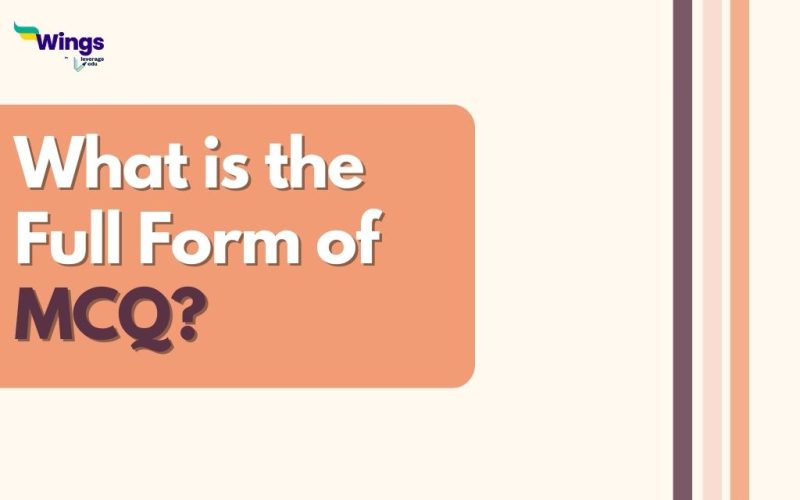The full form of MCQ is Multiple Choice Question. It is a type of objective assessment known as multiple choice (MC), objective response, or MCQ (for multiple choice questions) that requires respondents to select the most appropriate solutions from a list of possible answers. When a participant must choose between a number of parties, candidates, or policies in an election or market research survey, the multiple-choice format is most commonly used.
For instance, refer to the following to understand MCQ in a better way.
Which of the following is the national animal of India?
- Lion
- Tiger
- Elephant
- Cheetah
For people who don’t know the right answer, it is option 2, Tiger. This is basically how an MCQ works.
Discovery of MCQ
Although E. L. Thorndike pioneered a systematic method of student testing, one of his assistants, Benjamin D. Wood, is credited with inventing the multiple-choice exam. Multiple-choice testing became popular in the middle of the twentieth century when scanning and data-processing machines were developed to examine the findings. In 1982, Christopher P. Sole created the first computer multiple-choice test using a Sharp Mz 80 computer. Latin plant names can be difficult to understand and write. As a result, it was developed to assist people with dyslexia in dealing with agricultural themes.
Also Read: What is the Full Form of HMV?
Structure
A stem and a number of potential answers are the components of multiple-choice questions. The stem consists of a question to be asked, a problem to be solved, or an unfinished statement to be completed. The alternatives are the potential responses from which the test-taker can choose; the key response is the correct one, while the distractors are the incorrect ones. There can only be one correct response. Multiple response items, on the other hand, enable more than one correct answer to be entered. A correct response typically earns a set number of points towards the final grade, whereas a false response earns none. Exams may also award partial credit for unanswered questions or subtract points for incorrect solutions to discourage students from speculating. For each incorrect response on the SAT Subject tests, for example, a fourth point is deducted from the exam taker’s score.
More complicated elements, such as applied information, may include more than one component in the stem. Additional material or supporting papers, such as vignettes, graphs, tables, case studies, or in-depth explanations with several components, might be included in the stem. Anything can be included as long as it ensures the item’s greatest legality and authenticity. The stem is concluded by a lead-in question that indicates how the respondent must respond. What is the most frequent medical condition? This might be the introductory question for a medical multiple-choice quiz. Similarly, “What virus is the most common explanation?” in the context of a previously stated case study.
Many multiple-choice test items are wrongly referred to as “questions,” because they are not written in the form of a question. They could be offered in the form of partial claims, analogies, or mathematical equations, for example. As a result of its increased breadth, “item” is a far more acceptable descriptor. Items are held in an item bank.
Also Read: What is the full form of NO?
Popular Full Forms
Hope you liked reading about the full form of MCQ. If you want to read and know about more full forms like this then you can visit our full form list page. You can get a consolidated list of 300+ full forms here! Enjoy reading!
 One app for all your study abroad needs
One app for all your study abroad needs













